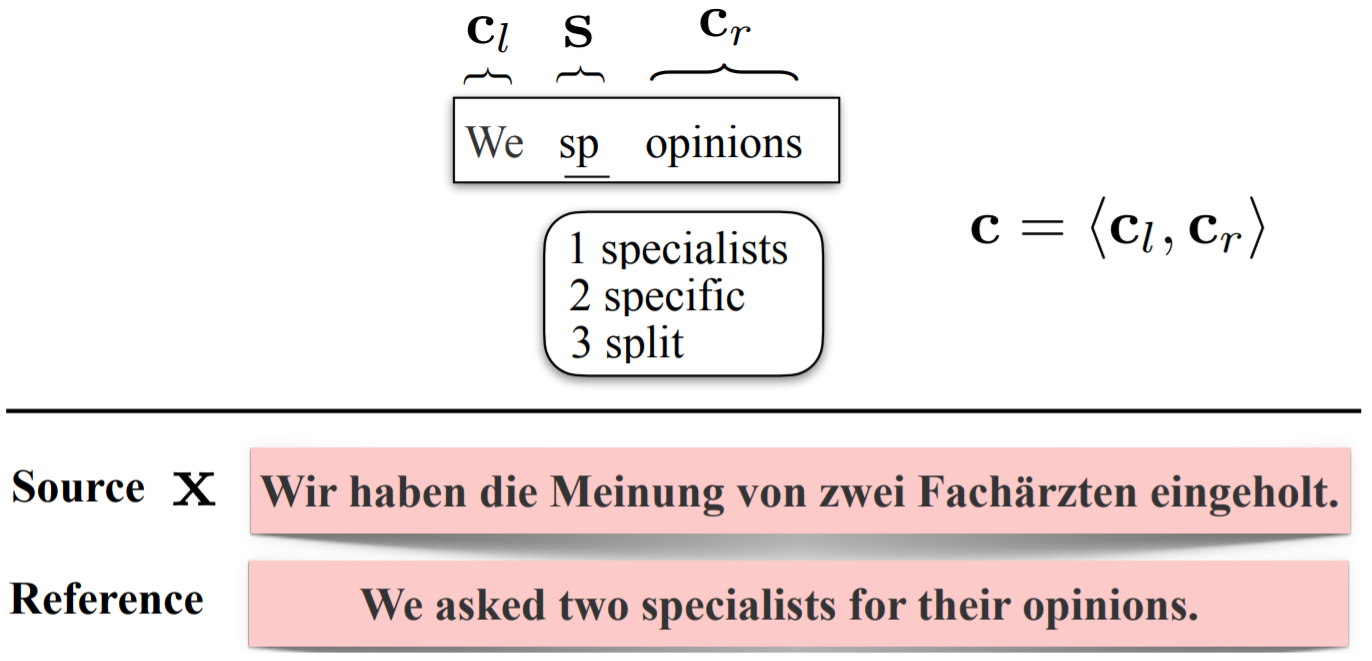
| Release of training and dev data | May 20th, 2023 |
| Release of test data | July 20th, 2023 |
| Result submission deadline | July 27th, 2023 |
| System paper submission deadline | September 1, 2023 |
| Paper notification | October 6, 2023 |
| Camera-ready version due | October 18, 2023 |
Note that system paper submission follows the paper submission policy in WMT, please see the section of paper submission information in WMT homepage for more details.
WLAC aims to predict a target word given a source sentence, translation context and a human typed character sequence. WLAC plays an important role in a CAT system in enhancing translation efficiency. The WLAC shared task was first held in WMT 2022 and participants can check its details in WLAC22-Findings.

Suppose x = (x1, x2, . . . , xm) is a source sequence, s = (s1, s2, . . . , sk) is a sequence of human typed characters, and a translation context is denoted by c = (cl, cr ), where cl= (cl,1, cl,2, . . . , cl,i), cr = (cr,1, cr,2, . . . , cr,j ). The translation pieces cland crare on the left and right hand side of s, respectively. This basic idea about WLAC task is shown in Fig 1, where the translation context c includes the left context cl and right context cr, underlined text “sp” is the human typed characters s and the words in the rounded rectangles are word-level autocompletion candidates. Formally, given a source sequence x, typed character sequence s and a context c, the word-level autocompletion (WLAC) task aims to predict a target word w which is to be placed in the middle between cland crto constitute a partial translation. Note that in the partial translation consisting of cl, w and cr, w is not necessary to be consecutive to cl,i or cr,1. For example, in Figure 1, cl = ("We", ), cr = ("opinions"), s = ("sp", ), the WLAC task is expected to predict w = "specialists" to constitute a partial translation "We ··· specialists ··· opinions ", where "···" represents zero, one, or more words (i.e., the two words before and after it are not necessarily consecutive).
To make the task more general in real-world scenarios, the assumption is made that the left context cl and right context cr can be empty, which leads to the following four types of context:
ATTENTION!! Participants must use only the data provided in train/dev/test. Please fill in the registration form before your participation.
Human Evaluation: Given a source sentence x, context c and a typed sequence s, there would be multiple ground-truth words w sufficing to the constraint of s, especially for a short s. However only a single of them is provided in the realistic test datasets, and hence automatic evaluation may lead to some limitations. As a result, we will additionally hire some professional translators for human evaluation by manually checking whether a predicted word is true or not.
For any further questions or suggestions, please contact us through WLAC googlegroups or drop an email to Lemao Liu.
Supported by TBA.